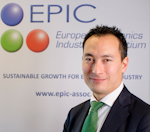Can we reduce cancer recurrences with tools to enable more precise surgical resection? That was the major question of a workshop, organized by the European Photonics Industry Consortium (EPIC), that drew 70 participants from 10 different countries to Erasmus University Medical Center (Rotterdam, The Netherlands) July 2-3, 2014. Titled "Intra-Operative Assessment of Tumor-Resection Margins," the event brought together physicians and researchers pursuing image- and optical spectroscopy-guided surgery, and small and large vendors of photonics and related technologies. And clearly, participating clinicians view optical image-guided surgery as the primary answer to that important question.
The value of the event was enhanced by its highly interdisciplinary character. Doctors from various medical disciplines (general surgery, urology, pathology) were present and explained the challenges they encounter within cancer surgery. "The workshop was a great experience of exchange between people of very different fields—surgeons and pathologists, photonics researchers, industrials and regulatory affairs experts—who very seldom have the opportunity to meet. Now that the photonics eyes know why, where, and what to look at, innovative projects will without doubt pop up to the benefit of all the stakeholders, and the patients at first!" said Fabian Dortu, Group Leader Biophotonics at Belgian research center Multitel (Mons).
With its "Surgery of the future" program, Erasmus has placed itself at the frontier of quality-advancement in oncologic surgery. Prof. Robert Baatenburg de Jong, chair of the medical center's department of otorhinolaryngology and head-and-neck surgery, started off quite unconventionally by stating, "In surgery, the emphasis usually is on how good we are. But instead we should carefully and objectively measure how bad things are in reality."
Hopes and needs
The presentations were very practical in addressing breast cancer (the number-one cancer occurring in women) and prostate cancer (the top cancer for men). Regarding the latter, participating urologists expressed hope for a tool for endoscopic prostate cancer surgery: An intra-operative probe with a picture-in-picture overlay of the tumor identifying signal, or a scanner to image the surface of a removed prostate for tumor. Erasmus pathologist Dr. Senada Koljenovic explained that for best patient outcome in skin cancer surgery, definite diagnosis and grading of cancer—along with complete tumor removal with adequate clean margins—is crucial.
Dr. Gerwin Puppels, CTO and managing director at RiverD International BV (Rotterdam), presented his work upon intra-operative assessment of tumor resection margins by Raman spectroscopy, a non-destructive, non-contact method that requires no reagents, labels, or other contrast-enhancing agents. Puppels said that Raman-based measurements taken in close cooperation with surgeons and pathologists revealed that water concentration is higher in tumor tissue than in normal tissue. The present integration time per Raman pixel was 1 s, which RiverD expects to reduce to 0.1 s. Clinical introduction is planned by 2018.
Dr. Juergen Popp of the Leibniz Institute for Photonics Technologies (Jena, Germany) presented a tri-modal approach, combining coherent anti-Stokes Raman scattering, two-photon excited fluorescence, and single-harmonic generation all through one optical path. This approach opens possibilities for digital staining, which—in contrast to traditional staining by chemical baths—does not alter the composition of the specimen. This means that the same sample could be sequentially imaged with different digital staining recipes, followed by a gold standard traditional staining (e.g., H&E).
Following the workshop, EPIC members toured several hospital departments. The tour reminded participants that when designing medical photonic devices, it is important to gain direct insight in the working circumstances of medical professionals.

